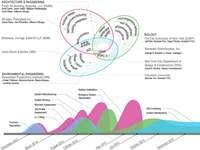Next Generation Building Technologies: A Different Path Towards Commercialization

This paper looks at an example of a next generation building technology moving to commercialization, beginning as an interdisciplinary collaboration in the academy within departments of architecture, science, and engineering. The project has become a reality by advancing the production of the system by working explicitly with architecture firms, manufacturers, and clients on real building installation projects. The technology is a modular plant wall system that improves indoor air quality (IAQ) in buildings by utilizing plants as a biomechanical filtration system that interconnects to a building's HVAC system. Potential benefits include reduced energy consumption, HVAC equipment requirements, and the improved well-being and productivity of building occupants. This project could only be completed with full collaboration of industry and the academy. The proof of concept could only be developed where multiplicities of expertise can be found – biologists, designers, engineers, horticulturalists. The proof of operation could only be tested in a full building scale integration where architects, contractors, manufacturers, and regulatory agencies can be fully integrated into the execution and hold agency over the outcomes.
keywords: Indoor Air Quality, Building Technology, Testbed


Add comment
Log in to post comments